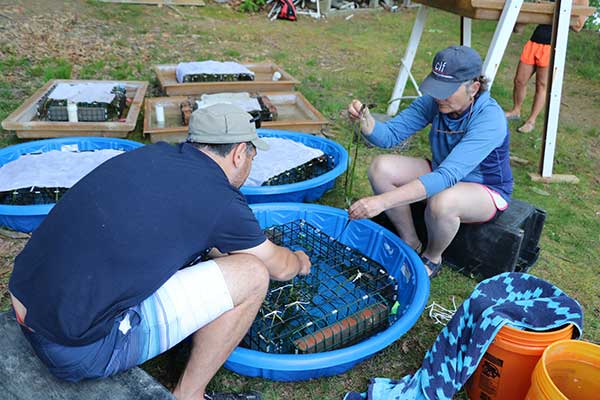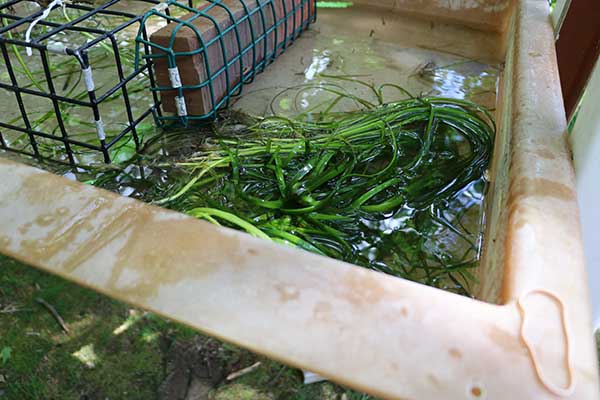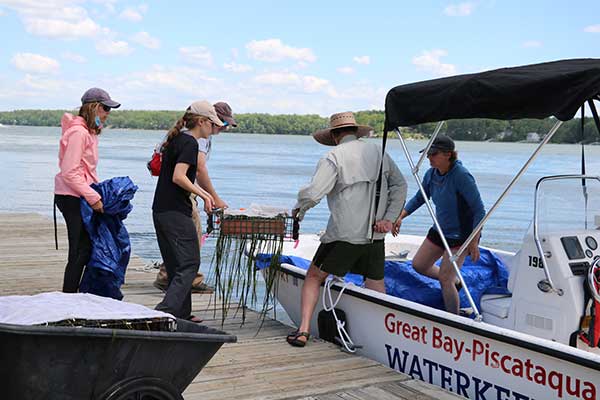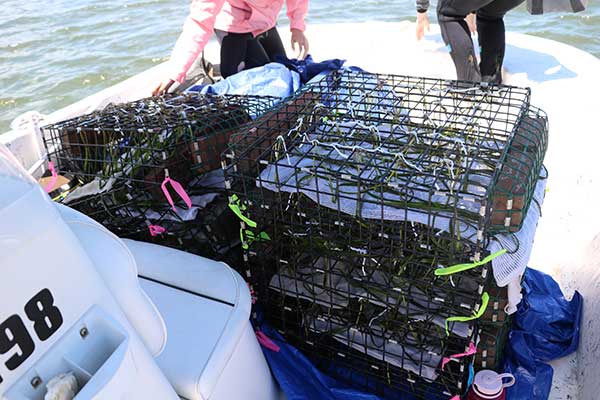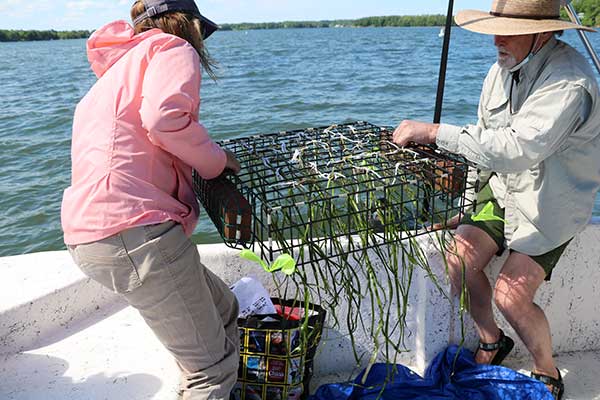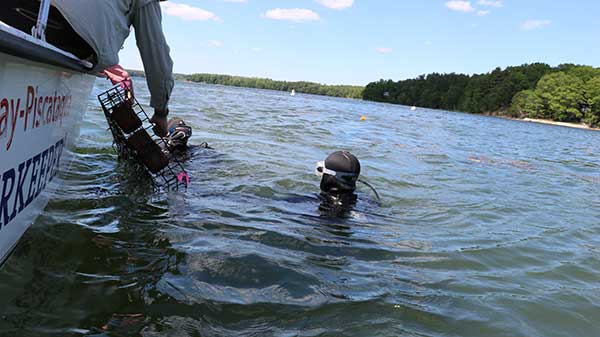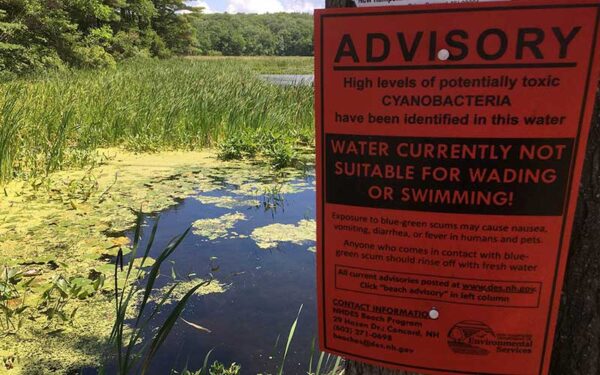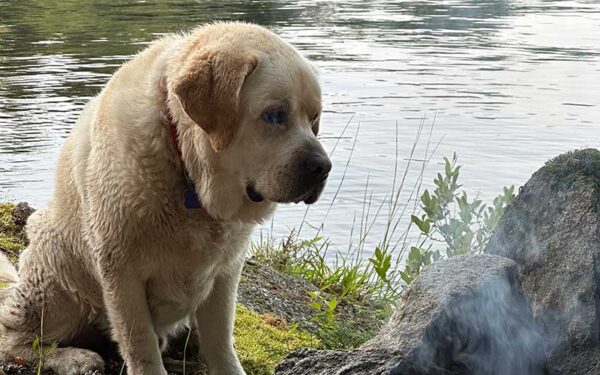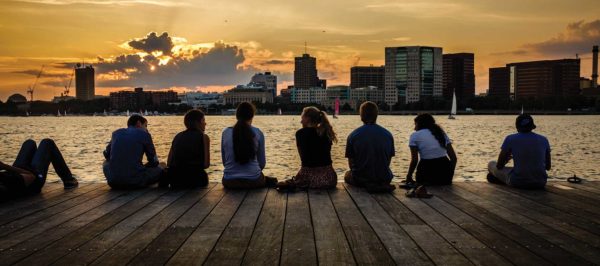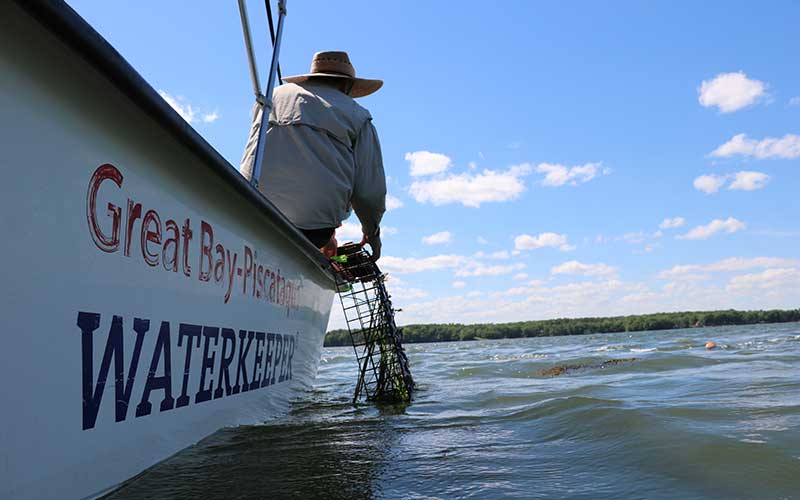
A pilot project in the Great Bay–Piscataqua Estuary aims to find out if transplanting healthy eelgrass offers hope for restoring this vital ecosystem.
On a sunny spring morning, I stood knee-deep in a bed of seagrass at the southern end of New Hampshire’s Great Bay. Despite the sun, I shivered as the chill of the June water permeated my wetsuit and neoprene booties. Other rubber-suited colleagues waded nearby, stooping to gently scoop ribbons of green grasses from the mucky sediment.
We each counted quietly under our breath as we gathered bundles of eelgrass shoots, some a foot or two long. A few miles away in deeper water, a team of scuba divers was also collecting young shoots, careful to ensure that the fibrous white plug at their base – a bit of rhizome – remained intact. Later, we would take the shoots we had gathered and transplant them to another part of the estuary – one that water pollution had stripped of its eelgrass.
Together, over the course of two weeks, our team of partners harvested 7,500 healthy eelgrass shoots and planted them at five locations around the Great Bay Estuary. As the Great Bay–Piscataqua Waterkeeper, I’m working on this collaborative effort with coastal scientists and environmental managers. Our goal: to see if we can harvest eelgrass in one area, then transplant it successfully in another. What we learn will help us understand if we can jumpstart the recovery of the ecosystem that depends on this underwater plant.
A lot rides on the outcome.
Eelgrass Was Once Abundant in Great Bay, But Pollution Killed Nearly Half of It
Once carpeted with lush meadows of underwater grasses, the Great Bay–Piscataqua Estuary was once a fertile place that provided a rich habitat for fish and shellfish. In fact, most of the fish found in the open ocean get their start in estuaries like the Great Bay.
The rivers that flow into the estuary – with names like Cocheco, Bellamy, Oyster, Lamprey, Squamscott, and Winnicut – sustained Native American populations for thousands of years. They also formed the cradle of communities of European settlers centuries ago.
But over the past decades, with increasing development, pavement, wastewater, roads, parking lots, and septic systems, water quality declined precipitously. That decline took with it nearly half of the eelgrass in the Great Bay system. Other critical species like oysters suffered a critical die-off as well, sending the estuary into a downward spiral that we are trying valiantly to reverse.
We’ve Pushed Successfully to Clean Up the Bay – But Still Have a Long Road Ahead
For nearly 20 years, CLF has been fighting to reduce pollution in the Great Bay estuary. The good news is that we’re making headway. Several cities and towns have vastly upgraded their wastewater treatment facilities, and we are seeing signs that water quality is improving.
In the hope that these positive trends continue, our team of researchers and advocates felt the time was right to test out different methods for restoring eelgrass. If those 7,500 shoots we planted re-establish themselves at the experimental sites, we might be able to scale up the effort and help the Great Bay Estuary thrive once again.
We still have a long road ahead to cutting the pollution that harms the Great Bay estuary. But if we continue making headway while we learn how to accelerate nature’s recovery, we’ll be doing the ecosystem – and all of us who live in its midst – a great service.
We couldn’t have made such progress without your support. We’ll be tracking the progress of this experimental replanting throughout the summer. Stay tuned by joining our Facebook group or following me on Instagram or Twitter.


